ASARECA IED, Sylvester Dickson Baguma backs onboarding agricultural research in regional integration
BY BEN MOSES ILAKUT
NAIROBI, KENYA—ASARECA Interim Executive Director, Dr. Sylvester Dickson Baguma has highlighted the importance of Agricultural Research and Development (AR4D) in the integration of economies in the East African Community (EAC) and the Common Market for Eastern and Southern Africa (COMESA) regions.
“Our Regional Economic Communities are promoting free movement of people and trade across Member States of the EAC and COMESA, however, just as the movements contribute facilitate transfer and sharing of technologies, they also lead to the spread of key crop diseases across the countries,” Dr Baguma explained to stakeholders attending the workshop on response to new and emerging pests and diseases of Banana in EAC on December 16, 2024. “The emergence of new pest threats, such as banana Bunchy Top Virus pose a significant risk to the regions banana industry and this calls for joint implementation of research initiatives to control the spread of the diseases and develop innovations for management.”

The Regional Capacity Building Workshop on Preparedness and Response to new and emerging pests and diseases of Banana in the East African Community was held in Nairobi, Kenya on December 16-20, 2024, and was meant to build the capacity of stakeholders in preparedness and response to the banana diseases.
Responses and strategies discussed
During the workshop, participants discussed current responses and strategies to new and emerging pests and disease, challenges of Banana (BBTV, BXW, Banana Rust Thrip); shared knowledge to enhance awareness; reviewed and updated country response plans; showcased and validated Best Management practices, innovations, and success stories for preparedness and response; and established a network of experts and institutions for collaboration.
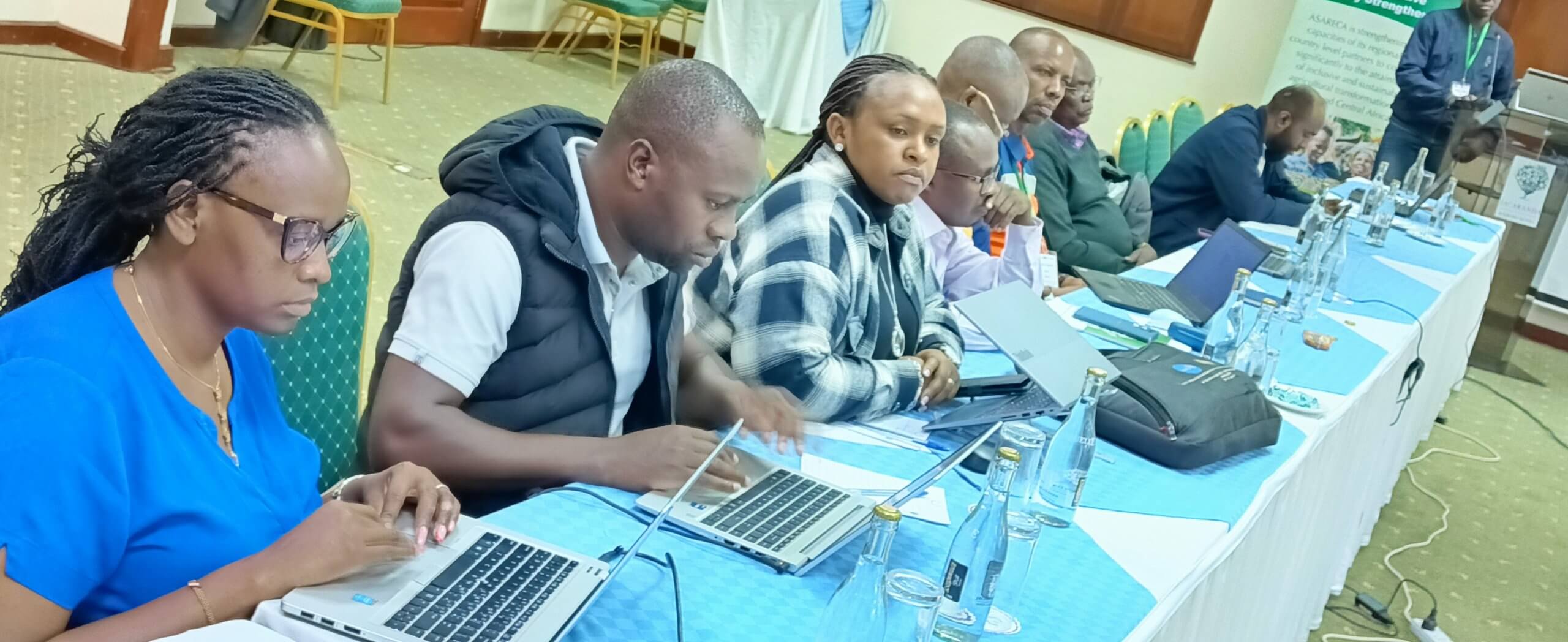
Banana diseases easily transmitted
Researchers underscored the current finding that it is extremely easy to transmit banana and cassava diseases noting that people transmit diseases either knowingly or unknowingly. Some of the key methods of transmission that have been identified include movement of heavy equipment or machinery including farm tractors as farmers hire the equipment from cooperatives or other farmers; imported vehicles, especially secondhand vehicles from across the globe shoes with soil from place to place including across borders; and through direct transfer and movement of planting materials and farm implements such as hoes and pangas.
EAC banana disease report discussed
The workshop provided an opportunity to present and disseminate the EAC Pest Risk Analysis Report for Trade in Bananas. Follow up actions agreed to at the workshop are expected to enhance surveillance and monitoring systems for banana pests and diseases; lead to the development or refreshing and implementation of country specific contingency plans; increase capacity for early detection and rapid response to banana pests and diseases; develop and refine SOPs/guidelines for inspection of bananas in the EAC; and improve coordination and information sharing among stakeholders.
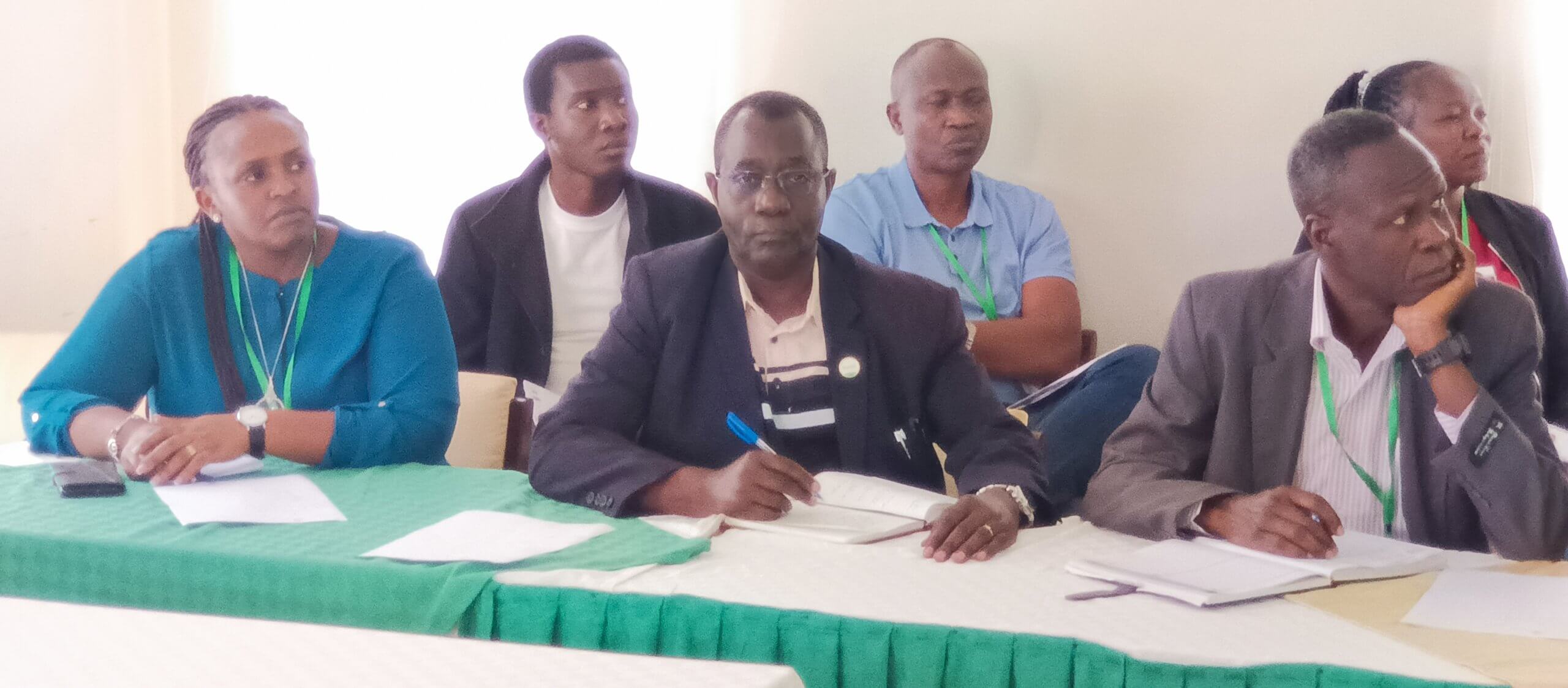
Partners ready for joint action
The workshop was organized by ASARECA in collaboration with East African Community (EAC), the International Institute of Tropical Agriculture (IITA), the Kenya Plant Health Inspectorate Service (KEPHIS), and the Centre for Agriculture and Bioscience International (CABI). All the partner organizations are working on various initiatives aimed at controlling the spread of banana diseases.
European Union, IFAD support
The initiative spearheaded by ASARECA is supported by the Comprehensive Africa Development Programme ex-pillar IV (CAADP-XP4) Programme, funded by the European Union and managed by IFAD. ASARECA is implementing the (CAADP-XP4) which started in 2019 and will end this year (2025). The Programme is part the European Union’s (EU) Development Smart Innovation through Research in Agriculture (DeSIRA) initiative. It answers to all the CAADP-XP4 outputs namely: Strengthened capacities of ASARECA and partner organizations in competencies required for agricultural transformation; establishment and operationalization of multi-stakeholder partnerships for innovation; formulation of policies in support of climate-relevant agriculture and food systems transformation, increasing investments, advocacy and market linkages; establishment of Knowledge Management and Communication systems for decision making and sharing of innovation and for advocacy related to climate-relevant agriculture transformation.
Controlling the spread of banana diseases, a priority of the EAC
The East African Community (EAC) was represented by Ms. Regina Kayitesi, the Coordinator of Sanitary and Phytosanitary (SPS) measures. Ms. Kayitesi informed participants that Banana is one of the priority crops selected by EAC for coordinated regional response due to its importance in food security and economic development. She highlighted the role of the EAC Technical Working Group (TWG) on Pest Risk Analysis (PRA) in providing technical expertise and leadership of competent authorities in EAC Partner States and for supporting Pests List development and regional harmonization for the EAC priority crops including Banana. Among the listed pests and diseases, the Banana Bunchy Top Virus is on the list.

Ms. Kayitesi thanked ASARECA for convening the workshop. She informed the meeting that the EAC Protocol on Sanitary and Phytosanitary (SPS) measures was established to strengthen cooperation and coordination of SPS measures at the national and regional levels to facilitate safe trade in Agricultural commodities. “Under Article 14 of the Protocol, Partner States committed to cooperate in matters of plant health including development of a framework for the management of pests and building systems for surveillance, pest listing, pest risk analysis and pest reporting. This is aimed at reducing phytosanitary trade barriers in the EAC while preventing the spread of pests in the region,” Ms. Kayitesi said.
IITA explains transboundary nature of pests
Dr. George Mahuku George, the Plant Pathologist at IITA, Tanzania noted that the most effective approach in managing pests and diseases is creating awareness among the affected communities, multi stakeholders including Governments, research, and development partners. “It takes integrated efforts, pooling together effective partnerships and collaboration to identify the problem, map sources of the pests, trace the mode of spread and how to curb the spread,” Dr. Mahuku said. “Emerging pests usually start in one country, but since they need no passports or visas to travel, they are transboundary. If we do not share information early enough, the pests will proliferate in our region. It is therefore critical to share information to stop their movement.
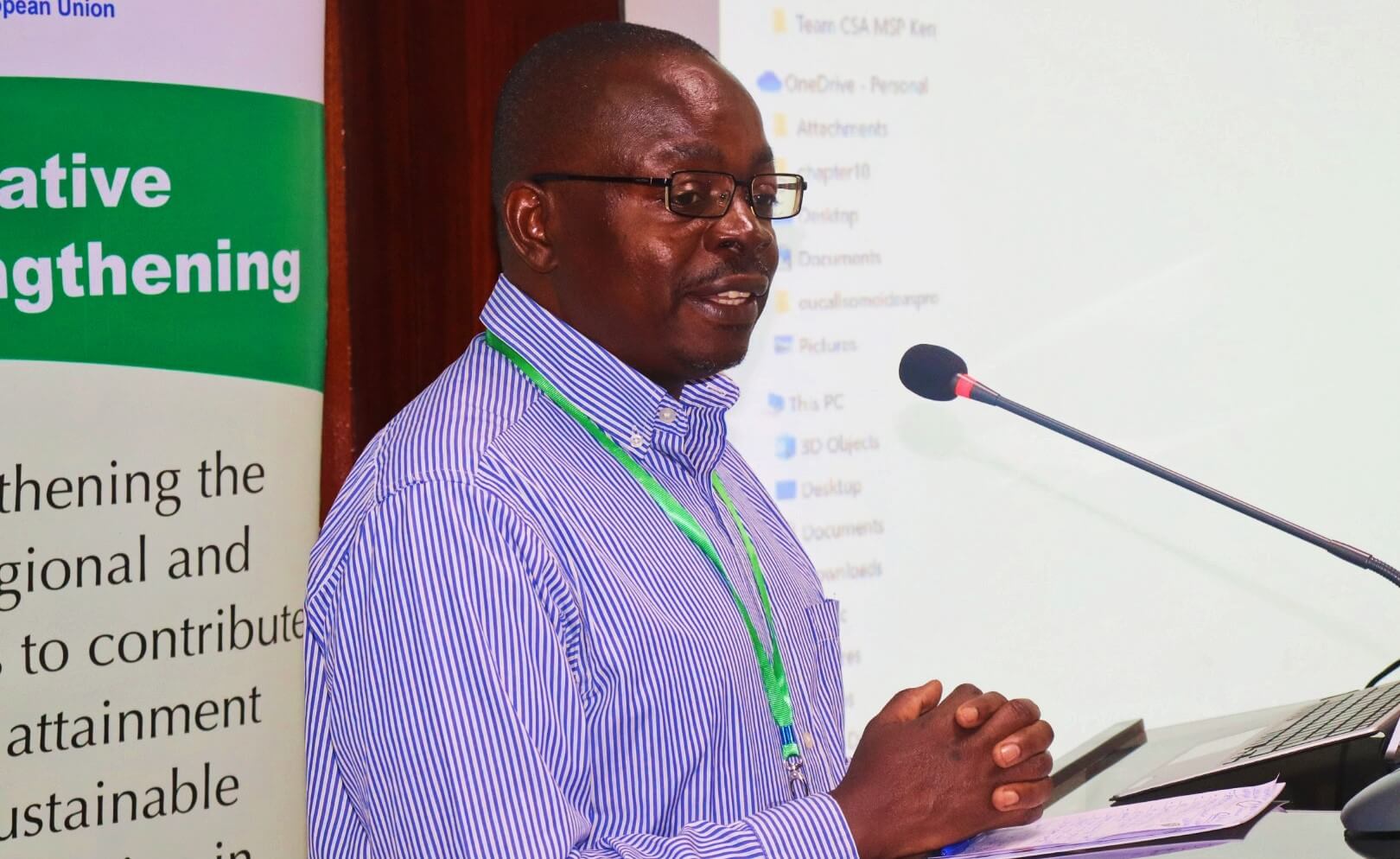
CABI contribution
Dr. Ivan Rwomshana, CABI Global Lead for Pest Preparedness noted that CABI has special interest in working around managing the spread of banana diseases in partnership with regional organizations such as ASARECA and national implementing teams. “Banana is staple to 80 million people in EAC. It is consumed as cooked food, dessert, beverage as well as wine among other uses. Leaving it to the detriment caused by pests and diseases, affects both livelihoods and economies in the region and the world over,” he said.

KEPHIS highlights the scope of threat and consequences
The representative of KEPHIS, Ms. Asenath Abigael Koech noted that the meeting was timely and strategic because of the intensity of disease at the time caused by easy movement of planting materials from country to country. “Even organisms such as black and yellow sigatoka, weevils and nematodes, Banana Rust thrip, and Fusarium wilt which previously seemed not to be a threat to crops have now turned into pests because of climate change. There is a need to share resources and conduct research together as a region to enhance preparedness in responding to pests. “Conducting joint activities at national and regional level with support of the pest risk analysis group coordinated by the EAC is the way to go,” she noted and called for establishment of additional technical working groups for pest forecasting, pest response, and pesticides. She emphasized the need to watch out for risks that come into EAC from the rest of the world and put in place mechanisms to curtail their proliferation in the region.

KALRO appreciates partnerships
Dr. Zachary Kinywa, of KALRO, speaking on behalf of the Director General, KALRO, Dr. Eliud Kireger, said the National Agricultural Research Systems consider strategic partnership with regional and global institutions critical in fighting Banana Bunchy Top Virus (BBTV), Banana Xanthomonas Wilt (BXW), Banana Bacterial Wilt (BBW) and other transboundary diseases. “Farmers lose a lot when pests and diseases affect their crops. Preparedness and response to the emerging pests and diseases is therefore critical in stemming the impacts of the diseases on farmers,” he stated.

Visit to KEPHIS
As part of the workshop, ASARECA Interim Executive Director, Dr. Sylveater Dickson Baguma, on December 19 led the researchers to KEPHIS, Muguga, Kenya’s official Agency and Centre of Excellence for exchange of clean germplasm. During the tour, Dr. Baguma noted that KEPHIS is a strategic partner in the fight against plant diseases. The teams from Uganda, Dr Congo, Somalia, Tanzania, Rwanda, Burundi and South Sudan were received by KEPHIS Muguga Deputy Executive Director, Dr. George Ngundo.
Role of phytosanitary service organizations
Dr. Ngundo explained that KEPHIS, undertakes phytosanitary services, seed certification, plant variety protection, and laboratory services for pursuing self-sustenance in the delivery of its mandate. KEPHIS generates revenue from the services it provides to Kenya and the region and uses it to pay for its programmes and operations, including staff salaries. “I commend KEPHIS for its self-sustenance model and implore other ASARECA Member States to study and emulate the example of KEPHIS to ensure that critical research for development initiatives continue to run even where there is limited government and donor support,” Dr. Baguma said.
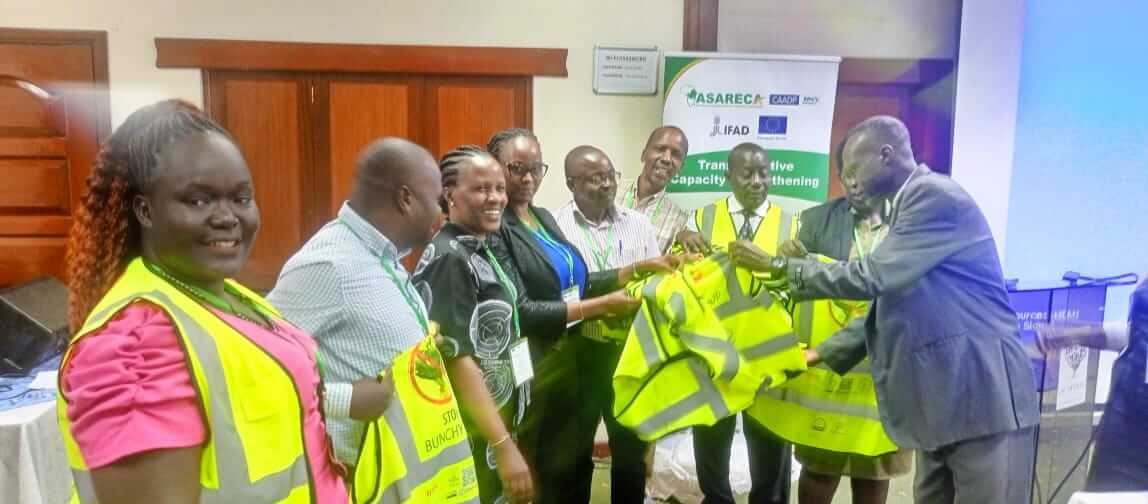
Follow up actions
As one of the follow up actions, participants tasked ASARECA, CABI, IITA and the EAC to work jointly to verify reports that the deadly banana diseases Fusarium Tropical Race 4 (TR4) that has been found in plants in the Democratic Republic of Congo. Commonly referred to as TR4, the disease is perhaps the biggest single threat to worldwide banana production. In case TR4 is confirmed, the participants want frontline actors in the region including CABI, ASARECA, IITA, in collaboration with the EAC Secretariat to support DRC to avoid its spread in the country and subsequently in the region.
The participants noted that besides efforts of development and research organizations to curb the prevalence and spread of transboundary banana diseases TR4, BBTV, BXW, BBW and cassava enemies; cassava mosaic, and cassava brown streak diseases through projects, national Government should be brought onboard at the earliest possible time to deal with anticipated risks caused by transboundary diseases. This is meant to ensure sustained and concerted action.
Why banana
Banana is one of the crops critical to food security in the EAC region with Uganda and Tanzania being the leading producers. It is a priority crop as a source of food and income for many households. East Africa is a secondary center of banana diversity thus important in the conservation of global germplasm. Bananas is one of the world’s traded fruits with Uganda and Tanzania being the leading producers and exporters in the EAC region with a combined annual output of 20.4 million tonnes but only 30% is traded.
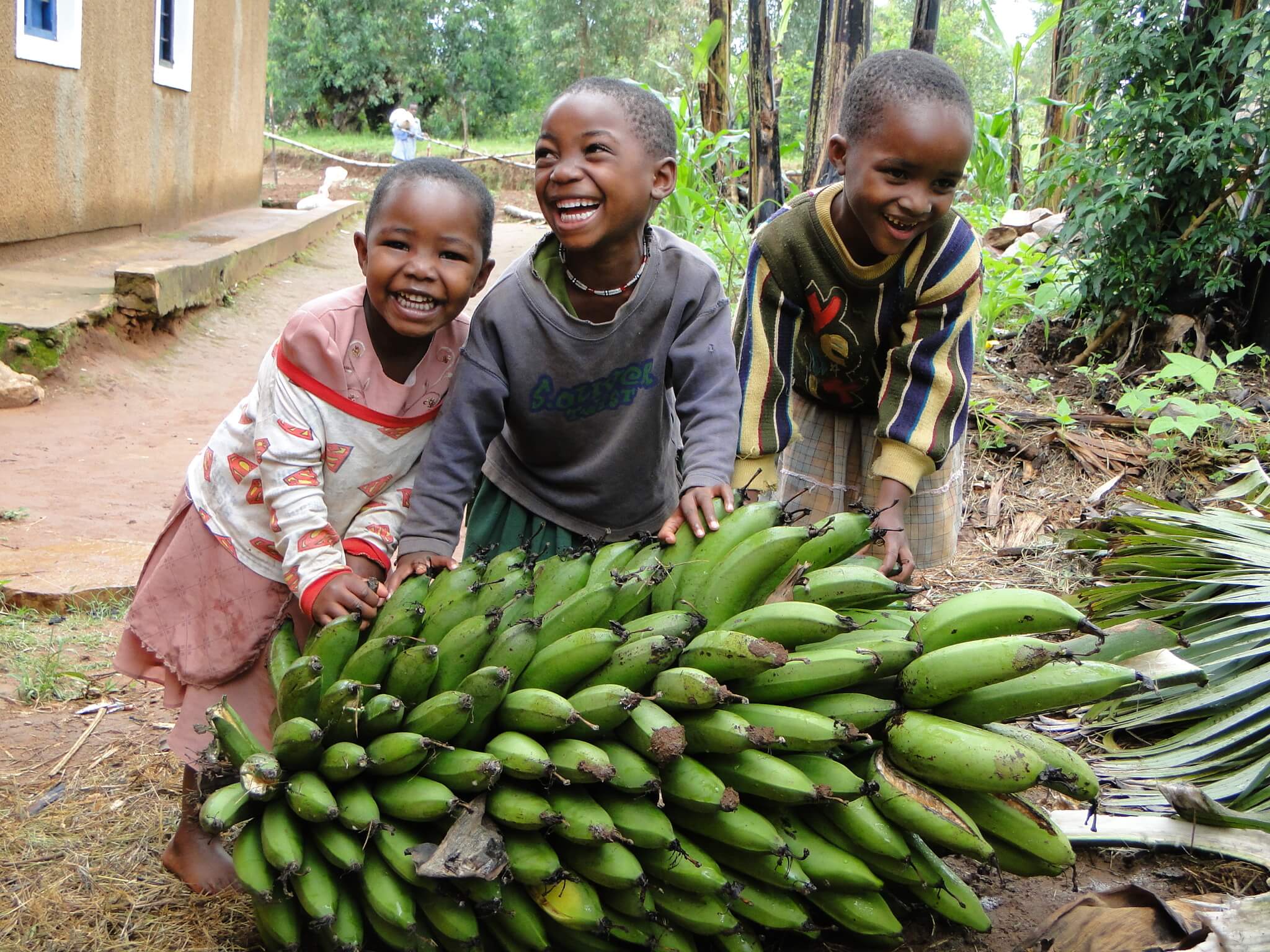
However, the production of the crop is constrained by both abiotic and biotic challenges. Key among the biotic challenges are pests and diseases such as: banana bacterial wilt, black and yellow sigatoka, weevils and nematodes. Recently, banana production in the region has suffered significant setbacks due to emergence of new threats such as the Banana Bunchy Top Virus disease, Banana Rust thrip, and Fusarium wilt (Tropical Race 4). In addition, the resurgence of Banana Xanthomonas wilt has been reported in some East African countries such as Uganda.
The event brought together experts from within East African community including EAC Technical Working Group for banana, Ministries of Agriculture officials, Researchers and Plant Inspectors from National Agricultural Research Institutions (NARIs) and Participants from National Plant Protection Organizations. The event drew 30 participants from the 8 EAC countries of Burundi, DRC, Kenya, Rwanda, Uganda, South Sudan, Somalia and Tanzania.
ASARECA ED pledges to continue joint action
“We as institutions working for East African citizens cannot afford to operate in silos. It is suicidal not to care about what is happening in neighboring countries. As ASARECA, we will continue to convene and coordinate efforts to deal with agricultural and trade related challenges of a regional nature.” These were the parting shots of ASARECA Interim Executive Director, Dr. Sylvester Dickson Baguma, to the experts from 8 ASARECA Member States.
